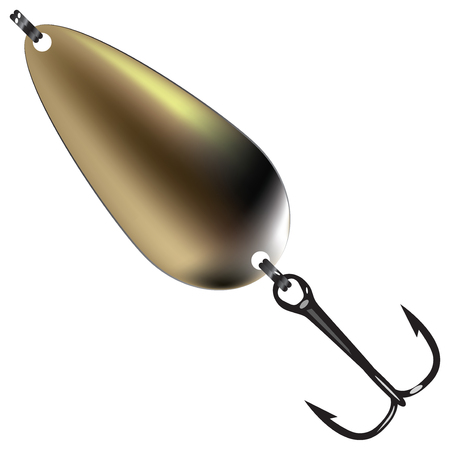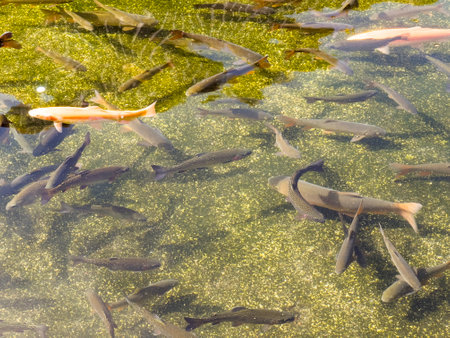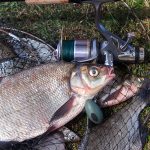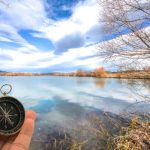1. Understanding Flathead Catfish Habitat
Flathead catfish are one of the most sought-after freshwater game fish in the United States, known for their size, strength, and unique behavior. To successfully target them, its important to understand where they live and how their environment affects their movement.
Where Flatheads Are Most Commonly Found
Flathead catfish prefer slow-moving or still waters with plenty of cover. Theyre typically found in:
| Habitat Type | Description |
|---|---|
| Rivers | Flatheads favor deep holes near bends, undercut banks, log jams, and areas with submerged trees. They like strong current edges where they can ambush prey. |
| Reservoirs | They often stay near the dam end or along old creek channels. Look for submerged structures like brush piles and rock piles. |
| Submerged Structures | Any underwater cover such as sunken logs, root wads, or man-made debris can attract flatheads. These spots provide shelter and feeding opportunities. |
Seasonal Movements of Flathead Catfish
Flathead catfish change locations throughout the year based on water temperature, spawning cycles, and food availability:
| Season | Behavior & Location |
|---|---|
| Spring (50°F–70°F) | As the water warms up, flatheads become more active and move into shallower areas near structure to feed. |
| Summer (70°F–85°F) | This is prime time for flathead fishing. They’re often found around deep holes during the day and move shallow at night to hunt. |
| Fall (50°F–70°F) | They begin moving back to deeper waters but still feed heavily to prepare for winter. |
| Winter (below 50°F) | Flatheads become sluggish and hold in deep, slow-moving pools with minimal current. Bites are rare but possible with precise tactics. |
The Role of Water Temperature and Current
Water temperature plays a huge role in flathead activity levels. Warmer temps (especially between 70–80°F) trigger feeding frenzies, while colder temps slow them down. Current is equally important—flatheads love areas where fast water meets slack water because it brings food right to them while providing an easy resting spot. Look for eddies, current seams, and behind large obstructions like boulders or fallen trees.
Quick Tips for Finding Flatheads:
- Scan river bends with sonar for deep holes and submerged logs.
- Fish at night during summer when flatheads roam shallows to hunt.
- Focus on structure-heavy areas in both rivers and reservoirs year-round.
If you know where to look—and when—you’re already halfway to landing a trophy flathead catfish.
2. Best Times to Target Flatheads
Timing is everything when it comes to fishing for flathead catfish. These fish are most active during specific times of the year, day, and under certain weather conditions. Knowing when to head out on the water can make all the difference in your catch rate.
Prime Seasons: Spring Through Early Fall
The best time of year to target flatheads is from late spring through early fall. As water temperatures rise above 70°F (around 21°C), flatheads become more active and start feeding aggressively. Heres a quick seasonal breakdown:
| Season | Activity Level | Notes |
|---|---|---|
| Late Spring (May – June) | High | Flatheads begin pre-spawn feeding; great time for big bites |
| Summer (July – August) | Very High | Peak feeding activity, especially at night |
| Early Fall (September – October) | Moderate-High | Fish feed heavily before cooling temps slow them down |
Best Time of Day: Nighttime Is Prime Time
If youre serious about catching flatheads, plan your trips after sunset. Flathead catfish are nocturnal predators, meaning they hunt and feed mostly at night. From dusk until dawn, they move into shallower waters looking for prey, making them easier to target with live bait or cut bait near structure.
Day vs. Night Fishing Comparison
| Time of Day | Flathead Activity | Tactics |
|---|---|---|
| Daytime | Low-Moderate | Target deep holes, heavy cover; use patience and precise placement |
| Nighttime | High | Fish move shallow; use live bait near submerged logs or banks |
Weather Conditions That Help
Mild weather with stable conditions often leads to better flathead action. Overcast days and slightly rainy evenings can be great for fishing, as the low light encourages movement. Avoid bright sunny days if possible—flatheads tend to stay deeper and less active then.
- Overcast skies: Increased daytime activity near cover
- Mild rain: Can spark feeding frenzies, especially in summer
- Drops in barometric pressure: Often trigger bites before a storm front moves in
The combination of warm water temperatures, nighttime hours, and favorable weather makes for the best shot at landing a trophy flathead catfish.

3. Top Baits for Flathead Catfish
When it comes to flathead catfish, using the right bait can make all the difference. These big predators are known for preferring live bait, and they often ignore anything that doesn’t look natural. Let’s break down the top bait options that work best for targeting flatheads, along with tips on presentation and keeping your bait lively.
Best Live and Cut Bait Options
Flathead catfish are ambush predators, and they prefer slow-moving or injured fish that they can easily grab. Here are some of the most effective live and cut baits:
| Bait Type | Description | Why It Works |
|---|---|---|
| Bluegill (Live) | One of the go-to baits for flatheads. Make sure its legal in your state to use them as bait. | Natural prey for flatheads, strong swimmers that stay active on the hook. |
| Sunfish (Live) | Includes green sunfish and longear sunfish. Hardy and easy to catch. | Lively action attracts hungry flatheads, especially near structure. |
| Shad (Live or Cut) | Threadfin or gizzard shad are popular choices. Use fresh cut shad if live ones aren’t available. | Oily scent draws in catfish from a distance; great option for nighttime fishing. |
Bait Presentation Tips
The way you rig and present your bait is just as important as the type of bait you use. Flatheads like their meals to look alive, so heres how to do it right:
- Use a slip sinker rig: This allows the baitfish to move naturally while staying near the bottom where flatheads hunt.
- Hook placement matters: For live bait, hook through the back behind the dorsal fin or through both lips to keep them swimming naturally.
- Match bait size to target size: Use smaller bluegill or shad for eating-size cats and bigger ones for trophy fish.
Keeping Baitfish Lively
If youre using live bait, keeping them healthy and active is crucial. A sluggish or dying bait won’t get much attention from a flathead. Here are a few tips:
- Aerated livewell or bait bucket: Keep water oxygenated using a battery-powered aerator, especially during hot days.
- Keep water cool: Warm water holds less oxygen. Adding ice packs (not direct ice) can help maintain ideal temperatures.
- Avoid overcrowding: Too many baitfish in one container leads to stress and early death. Give them room to swim.
Selecting the right bait and presenting it properly is key when targeting flathead catfish. With these tips in your tackle box, youll be well on your way to landing more—and bigger—flatheads.
4. Rod, Reel, and Rig Recommendations
When it comes to targeting flathead catfish, having the right tackle can make all the difference. These fish are big, strong, and known for putting up a serious fight. That means your gear needs to be tough enough to handle them without breaking down. Heres a breakdown of what you need to look for when choosing your rod, reel, line, and rig setup.
Heavy-Duty Rods
Flatheads aren’t your average pond cats—they’re powerful and can weigh 40 pounds or more. Youll want a heavy-action rod with enough backbone to haul in these river monsters, especially if youre fishing in current or near snags.
| Rod Length | Action | Power | Recommended Use |
|---|---|---|---|
| 7’6” to 9’0” | Moderate-Fast | Heavy | Riverbank or boat fishing with big baits |
Baitcasting Reels
Baitcasting reels are the go-to choice for flathead catfish because they offer better torque and control when battling large fish. Choose a reel with a strong drag system (at least 20 lbs) and a high line capacity so you can handle long runs and deep dives.
Features to Look For:
- Low gear ratio (around 5:1) for better cranking power
- High-quality drag system for smooth resistance under load
- Corrosion-resistant components if fishing brackish waters
Strong Fishing Line
Your line is one of the most important parts of your setup. Flatheads often hang around logs, rocks, and other underwater structure that can shred weak lines in seconds. Braided line is great for strength and sensitivity, while mono provides shock absorption.
| Line Type | Pound Test | Best Use Case |
|---|---|---|
| Braided Line | 50–80 lb test | Fishing around heavy cover or structure |
| Monofilament Line | 30–50 lb test | Softer hook sets; more stretch helps absorb runs |
Proven Rig Setups: The Carolina Rig
The Carolina rig is a tried-and-true method for catching flathead catfish. It allows live bait to move naturally while keeping it close to the bottom—right where flatheads like to ambush prey.
Carolina Rig Components:
- Sliding sinker: 1–5 oz depending on current strength
- Bead: Protects knot from sinker impact
- Swivel: Prevents line twist and connects mainline to leader
- Leader line: 12–24 inches of heavy mono or fluoro (50–80 lb)
- Hook: 5/0 to 8/0 circle or kahle hook for live bait presentation
This setup works well whether youre bank fishing or anchored up in a boat. Cast upstream and let the bait settle into deeper pools where flatheads like to lurk during daylight hours.
Selecting the right rod, reel, line, and rig will help you stay prepared when that monster flathead finally takes the bait. With durable gear and a solid setup like the Carolina rig, youll be ready for action whenever and wherever these whiskered giants show up.
5. Tactics and Techniques for Success
Targeting flathead catfish takes more than just tossing out bait and hoping for the best. These big, bottom-dwelling predators are smart, elusive, and often stay tucked away in structure-rich areas. Heres how to boost your chances with proven tactics and techniques that seasoned American anglers use.
Anchoring vs. Drifting
Choosing between anchoring and drifting depends on the water conditions and the time of day. Flatheads are usually stationary hunters, so anchoring near prime cover is often more effective.
| Method | When to Use | Pros | Cons |
|---|---|---|---|
| Anchoring | Nighttime or near heavy cover (logs, brush piles, deep holes) | Keeps bait in strike zone longer; ideal for known hotspots | Less coverage; may need to reposition if no bites |
| Drifting | Daytime or when searching large areas | Covers more water; good for locating active fish | Bait may pass by too quickly; harder to stay on target zones |
Night Fishing Tactics
Flatheads are nocturnal feeders, making nighttime one of the best times to catch them. As the sun sets, they move from deep holes to shallow flats and feeding areas. Use these tips:
- Scout during the day: Identify log jams, river bends, and submerged structures.
- Use live bait: Flatheads prefer live bluegill, shad, or small bullheads at night.
- Keep it quiet: Avoid loud noises and lights that can spook fish in shallow water.
- Use glow sticks or rod bells: These help detect bites in low visibility without scaring fish.
Reading River Structure Effectively
The key to finding flatheads lies in understanding river structure. Look for areas where they can ambush prey and stay hidden during the day.
Main Structures to Target:
| Structure Type | Description | Why It Works |
|---|---|---|
| Bend Holes | Deep holes formed at river bends due to erosion | Flatheads rest here during the day; great anchor spot at nightfall |
| Sweepers/Downed Trees | Trees submerged along banks with branches under water | Provides overhead cover and ambush points for predators |
| Ledges & Drop-offs | Abrupt changes in depth near channels or shorelines | Baitfish gather around these spots—so do flatheads |
Pro Tip:
If youre not getting bites within 30–45 minutes after anchoring near a promising structure, don’t be afraid to move. Flatheads are territorial but wont always be active in every hole.
The right tactics make all the difference when chasing flathead catfish. By choosing your fishing method based on conditions, focusing on productive night strategies, and learning how to read river features like a pro, youll up your odds of landing that trophy flathead youve been after.


